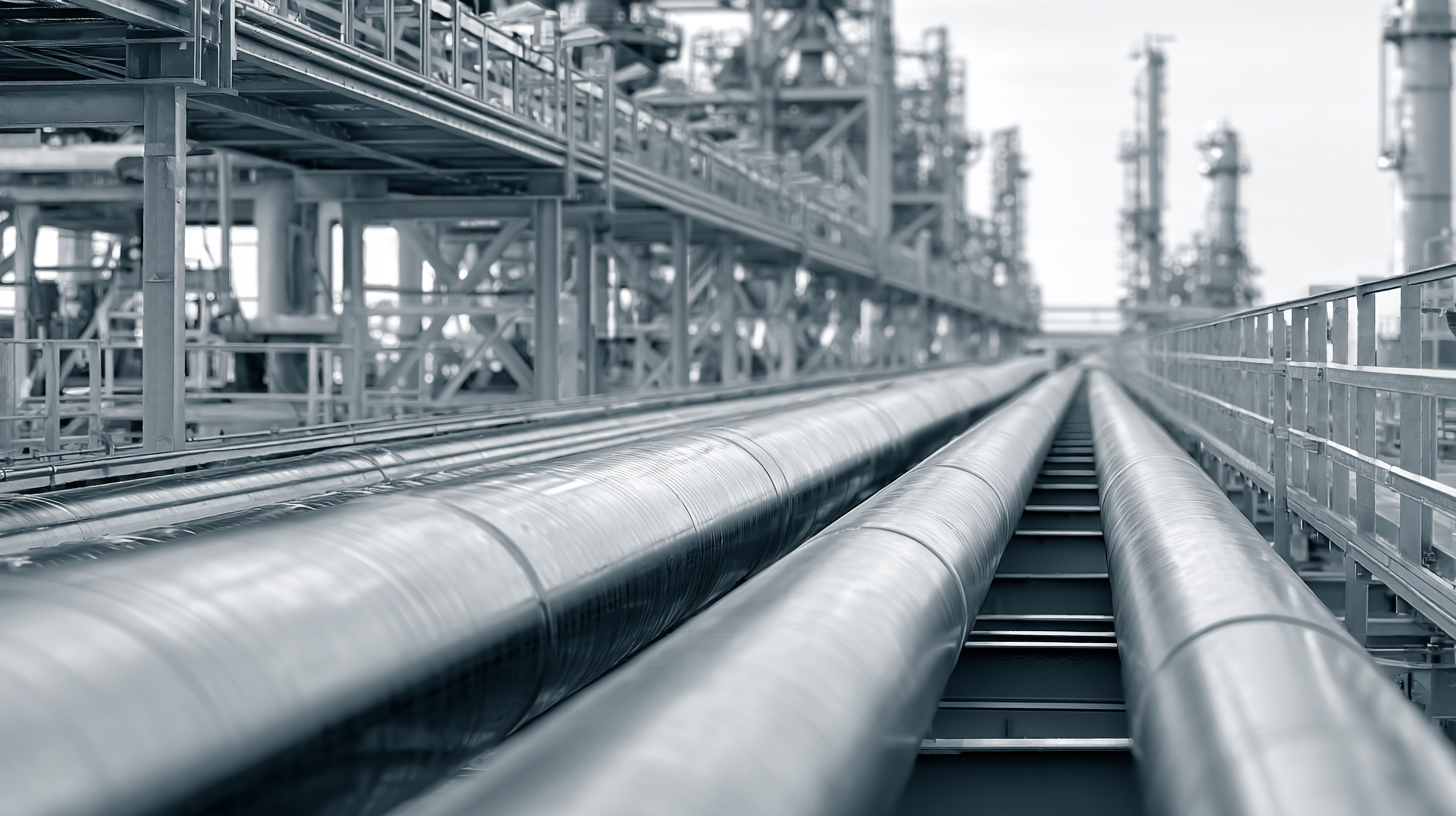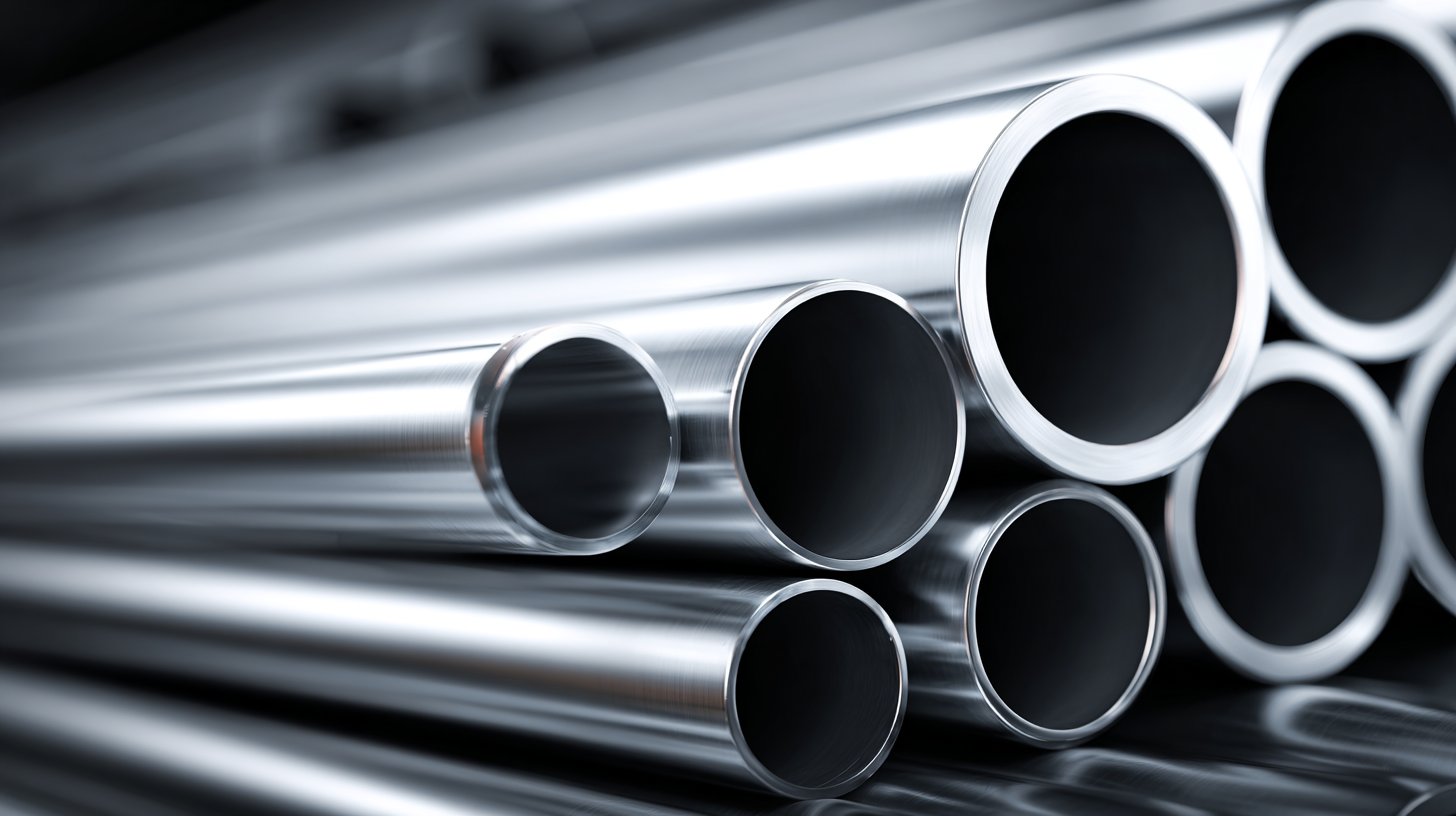In the ever-evolving landscape of global sourcing, selecting the right materials is crucial for project success, particularly when it comes to industrial applications. One key material that has gained prominence in recent years is the seamless pipe, which is highly valued for its strength and durability in extreme environments. According to a report by MarketsandMarkets, the seamless pipe market is projected to reach USD 22.06 billion by 2023, growing at a CAGR of 4.5% from 2018 to 2023. This growth underscores the increasing demand for seamless pipes across various industries, including oil and gas, construction, and manufacturing. Understanding the different types and specifications of seamless pipes is essential for making informed sourcing decisions, as it can significantly impact the quality and efficiency of projects. This guide aims to equip you with the knowledge needed to navigate the complexities of seamless pipe selection, ensuring that your sourcing needs are met with precision and confidence.

 When it comes to seamless pipe manufacturing, adhering to industry standards is paramount. These standards ensure that pipes meet specific performance criteria, delivering reliability across a wide range of applications. Without these benchmarks, manufacturers could compromise on quality, leading to pipes that may fail under pressure or corrosion. Industry standards such as ASTM, ISO, and API provide essential guidelines that dictate the materials, testing methods, and manufacturing processes required for seamless pipes. By aligning with these standards, manufacturers can ensure their products not only meet global regulations but also satisfy customer expectations for safety and durability.
When it comes to seamless pipe manufacturing, adhering to industry standards is paramount. These standards ensure that pipes meet specific performance criteria, delivering reliability across a wide range of applications. Without these benchmarks, manufacturers could compromise on quality, leading to pipes that may fail under pressure or corrosion. Industry standards such as ASTM, ISO, and API provide essential guidelines that dictate the materials, testing methods, and manufacturing processes required for seamless pipes. By aligning with these standards, manufacturers can ensure their products not only meet global regulations but also satisfy customer expectations for safety and durability.
Moreover, the importance of industry standards extends beyond mere compliance; they foster trust between suppliers and clients. In a global sourcing context, buyers often encounter various manufacturers with different levels of expertise and quality assurance. By prioritizing industry standards, procuring companies can streamline their selection process, opting for products that have proven their reliability through rigorous testing and certification. This not only mitigates risks but also enhances the overall performance of the piping systems in which these seamless pipes are utilized, resulting in a more efficient and cost-effective operation.
When it comes to global sourcing of seamless pipes, teams often encounter several challenges that can complicate the selection process. One of the primary issues arises from the diverse quality standards and regulations across different regions. Sourcing teams must navigate varying certifications and compliance requirements, which can lead to confusion and potential delays in procurement if not addressed correctly. Understanding the specific standards applicable to each market is crucial for ensuring that the selected pipes meet both local and international expectations.
Another common challenge is the variability in pricing and supply chain logistics. Fluctuations in raw material costs, transportation fees, and tariffs can significantly affect the overall budget. Additionally, disruptions in the supply chain, whether due to geopolitical factors or unexpected demand surges, can hinder timely delivery. Sourcing teams need to establish strong relationships with reliable suppliers and continuously monitor market conditions to mitigate these risks. By developing a strategic sourcing plan that incorporates flexibility and adaptability, teams can better manage these challenges and make informed decisions when selecting seamless pipes for their projects.
When evaluating seamless pipe types for global sourcing needs, businesses must consider several key factors that can significantly impact decision-making and project outcomes. According to recent market analysis, the Stainless Steel Seamless Pipes Market is projected to reach USD 5.15 billion by 2030. This anticipated growth highlights the increasing demand for high-quality, durable materials in various industries, from construction to automotive manufacturing. Thus, selecting the right type of seamless pipe requires an understanding of its specific applications and performance characteristics.
Moreover, another critical factor to keep in mind is the growth trajectory of the U.S. Cold Drawn Seamless Steel Pipes Market, which is expected to witness substantial fluctuations based on production processes like Cross Roll Piercing and Pilger Rolling. These production techniques directly affect the strength and adaptability of seamless pipes, making it essential for businesses to examine these methods when making procurement decisions. Detailed market reports indicate a rising trend in specialized pipe connectors, projected to expand from USD 5.67 billion in 2024 to USD 8.92 billion by 2033. This underscores the necessity of considering complementary products and their implications for supply chain efficiency and overall project success.
| Seamless Pipe Type | Material | Diameter (inches) | Wall Thickness (mm) | Pressure Rating (PSI) | Applications |
|---|---|---|---|---|---|
| ASTM A106 Grade B | Carbon Steel | 2 | 5 | 6000 | Oil & Gas |
| ASTM A335 P11 | Alloy Steel | 3 | 8 | 4500 | Power Generation |
| ASTM A312 TP304 | Stainless Steel | 4 | 6 | 3000 | Chemical Processing |
| API 5L X52 | Line Pipe Steel | 6 | 10 | 4000 | Transportation |
| ASTM A790 S31803 | Duplex Stainless | 5 | 7 | 2000 | Marine Applications |
When selecting seamless pipes for global sourcing, understanding material specifications is crucial, as these specifications play a significant role in overall performance. Seamless pipes can be made from various materials such as carbon steel, stainless steel, and alloy steel, each offering unique properties suited for different applications. Carbon steel pipes are often favored for their excellent strength and affordability, while stainless steel pipes resist corrosion in challenging environments, making them ideal for chemical processing or oil and gas industries.

Tip: Always verify the material certification of the seamless pipes you intend to purchase. This ensures that the pipes comply with international industry standards and will perform optimally in your specific application.
Furthermore, the finish and treatment of seamless pipes should not be overlooked. A smooth finish reduces friction and enhances flow efficiency, while proper heat treatment can improve strength and durability. By carefully considering these aspects, you can ensure that your selected pipes will withstand operational stresses over time without compromising safety.
Tip: Consult with suppliers to obtain detailed information on the finish and treatment processes used for their seamless pipes. This knowledge can guide your choice toward products that align with your quality expectations and project requirements.
Navigating compliance and quality assurance issues is critical when sourcing seamless pipes globally. The first step is to familiarize yourself with international standards, such as ASTM, ISO, and ASME. These standards not only cover the quality of materials but also ensure that the pipes meet the necessary performance requirements for various applications. Understanding these regulations can help you select suppliers who adhere to these benchmarks, reducing the risk of quality-related discrepancies.
Tip: When vetting suppliers, request documentation demonstrating their compliance with relevant standards. Certificates, quality assurance plans, and inspection reports can provide insight into their manufacturing processes and commitment to quality.
Moreover, consider engaging third-party inspection services to verify the quality of the products before shipment. This can be particularly beneficial when dealing with overseas suppliers where physical inspection may not be feasible. Third-party inspections can help identify any potential issues early in the supply chain, saving time and costs associated with returns or replacements.
Tip: Establish clear communication channels with your suppliers to facilitate transparency. Regular updates on production status, quality checks, and adherence to timelines can enhance trust and ensure smoother operations throughout the sourcing process.



